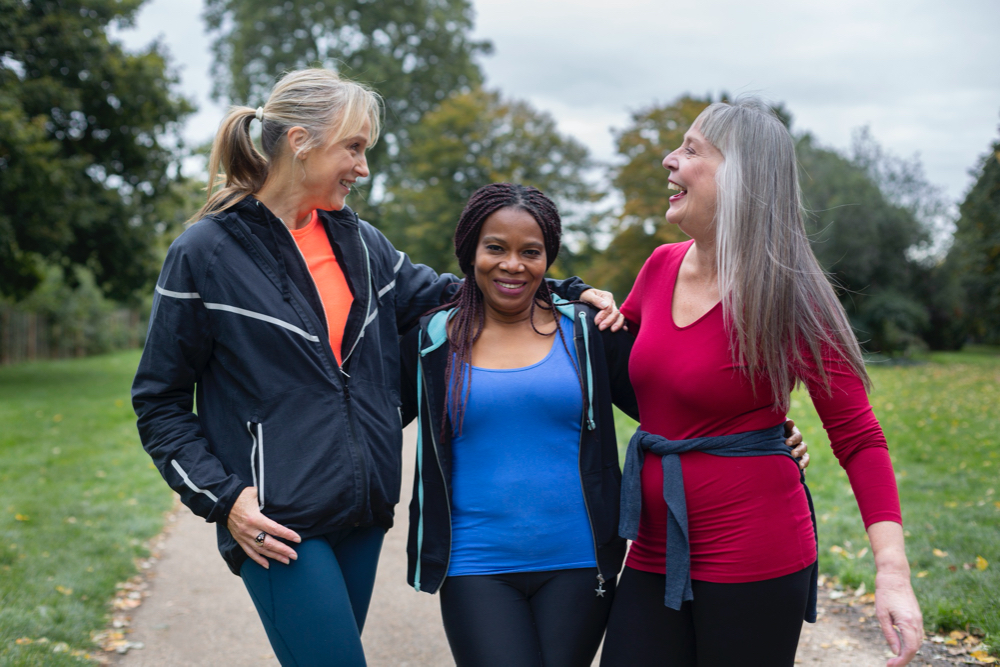- Fast results
- 4,000+ locations
- 4.8 star rating
Need Help? (888) GET LABS


Thinking about menopause and how you prepare for it? You’re on the right track by simply taking an interest in the matter. After all, menopause can significantly change your physical and mental health.
Menopause is when a woman produces less reproductive hormones, inhibiting her ability to get pregnant. It typically happens between the ages of 44 to 55. But in rare cases, it could be even earlier. For proactive menopause preparation, here are the steps you need to take.
Getting your baseline health information make it easier for your doctor to identify your risks for health conditions that could surface during menopause. These include data from your annual physical exam, hormone aging profile, and age management evaluation. Eventually, you may undergo a menopause blood test.
To do this, consult a healthcare provider, typically your gynecologist. If you don’t have the time or immediate means to set an appointment and go to the clinic, you can book a virtual consultation with a licensed physician.
In doing so, you’ll better understand menopause and how your body can cope in the best way possible.
During perimenopause (transitional phase before menopause), women in their late 30s and early 40s may experience urinary incontinence. In this condition, muscle and nerve problems in the pelvic floor cause uncontrollable urine leaks.
But you can strengthen your pelvic control by regularly doing proper kegel exercises, also known as pelvic floor muscle training. Not only do these exercises help your pelvic muscle to better contract and relax, giving you more stream control, but they also promote vaginal tightness.
To perform Kegels, do the following steps:
Your pelvic floor muscles are located between your legs. To locate them precisely, try lifting and holding the Kegel muscles while urinating.
But keep in mind that this should not be done regularly when urinating – you may trigger other bladder conditions. Do this just once and only to locate the Kegel muscles. Another way to go is by squeezing them in when passing gas.
Tighten your pelvic floor muscles for three seconds. Then relax it for three more seconds. Do this slowly while sitting or lying down.
Continue squeezing and relaxing your Kegel muscles ten consecutive times. This makes one set. Do it once in the morning and then in the evening. As you improve your muscle strength, you can also increase the number of sets or the length of squeezing and relaxing your Kegel muscles.
Kegel exercises ensure that your pelvic floor muscles remain tight and firm as you age. When you reach menopause, these muscles weaken, which can lead to incontinence. As a result, you might experience bladder leaks or pass gas or stool accidentally.
One of the critical events during menopause is the limited production of estrogen. Estrogen is a reproductive hormone produced by the ovaries. Aside from stimulating ovarian follicles and egg cell maturation, this hormone also influences bone growth.
Estrogen regulates bone turnover and promotes the activities of osteoblasts – the cells responsible for bone growth and formation. Therefore, with menopause depicting a significant drop in estrogen, a woman’s bone health will likely be affected.
Bone conditions like osteoporosis have become common among older women, affecting roughly eight million in the US. However, you can protect your bone health as part of menopause preparation by doing the following:
Did You Know? Vitamin D helps absorb calcium and phosphorus, making it an essential nutrient for bone-building. But it also has other roles to play in functions such as immunity against infections and muscle strength. Learn why you shouldn’t sleep on getting sufficient vitamin D.
Weight gain among middle-aged women is common. For one, aging impacts muscle mass and tissue loss. And adding menopause to the equation could only speed up weight gain, especially around the abdomen.
Estrogen levels, specifically estradiol, which drop due to menopause, promote weight gain as it is crucial in regulating a woman’s metabolism. It also influences fast absorption and storage in the body.
This menopausal change, along with the lack of exercise, can lead to rapid weight gain that can result in metabolic disorders like type 2 diabetes and hyperlipidemia. Nevertheless, you can take control of your weight through the following actions:
When you reach your optimum weight before menopause, it becomes a lot easier to maintain it rather than work your way on losing the extra pounds. Also, incorporating the above mentioned actions in your routine makes it easier to combat weight gain throughout perimenopause and postmenopause.
Pro Tip: Weight loss is easier said than done – there is no doubt about that. During your weight management journey, you will encounter numerous obstacles that could easily urge you to give up. However, it’s not impossible either. Before choosing a weight loss plan, prepare yourself mentally and physically.
Uninterrupted sleep for about eight hours a night provides plenty of health benefits, including aiding in a smooth menopausal transition for women.
On average, around 40% of women in their menopause experience trouble sleeping. These problems are even more notable during perimenopause and postmenopause. Common sleep issues linked to menopause include hot flashes, insomnia, restless legs syndrome, and obstructive sleep apnea.
If you already have these conditions (minus the hot flashes), it’s best to work with your doctor on adequately handling the potential aggravation of its symptoms due to menopause.
On the other hand, if you can complete the recommended sleep hours, ensure you do so as part of your menopause preparation. Create an optimum sleep-wake cycle by achieving quality sleep within a fixed schedule.
Also, if you’re experiencing insomnia, check with your doctor to find any health condition causing it. For example, hyperthyroidism or an overactive thyroid can lead to sleeping difficulties. Addressing this imbalance will, in turn, help you sleep better.
Pro Tip: If you’re losing sleep because of anxiety, check out some science-backed sleeping tips to help you achieve a calm mind and improve your sleep hygiene.
Menopause symptoms can be uncomfortable, and unhealthy habits like smoking, drinking alcohol, and doing illegal drugs can only worsen these.
For example, heavy drinking can affect the rapid development of bone disorders like osteoporosis. Plus, it aggravates anxiety, depression, and sleep disruptions.
Smoking cigarettes or other tobacco products also increases your risk for conditions common among menopausal women. These include hip fractures, heart disease, and premature aging. Consider withdrawing from cigarette use as early as possible before perimenopause peeps around the corner.
On the other hand, if you’ve been using illicit drugs, you may find it more challenging to detoxify during menopause. Plus, your dependence can make it twice as hard to handle the transition, precisely the symptoms you’ll experience. That said, it’s best to work on your rehabilitation and detoxification as part of your menopause preparation.
The kinds of food you include in your daily routine influence your overall health. Naturally, this also impacts your menopausal transition.
Your diet predominantly determines the wellness of many aspects of your health, including metabolism and heart health. As changes in your hormone drive menopause, you may experience weight gain.
But how much weight you increase will also depend on the type, proportion, and amount of food you eat.
For example, if you consume processed food a lot, there’s a good chance that you’ll gain weight more than those who eliminate these food products from their diet.
That said, consider adopting a whole-food diet consisting of organic foods like fruits, vegetables, and healthy fat sources. It also limits processed foods and those with chemical additives.
In addition, several foods can also help alleviate menopause symptoms like hot flashes, sleep problems, mood swings, and anxiety. Include the following when planning your diet.
Pro Tip: When choosing the right diet plan, you may find yourself leaning toward going vegetarian or vegan. Although eliminating animal-based fat sources, you could also miss a lot in giving up meat altogether. Therefore, check out the health risks of going vegan and work with your doctor to know if this is the best route to go in your diet.
With hot flashes, mental fogginess, and irritable menopause symptoms on your back, it’s easy to get stressed out. If you don’t have a good handle on your emotions and anxiety before perimenopause, you may find yourself experiencing severe anxiety.
On the other hand, preparing yourself mentally can help with stress management. Consider doing basic stress coping mechanisms such as deep breathing, meditating, unwinding, and socializing.
Keep in mind, however, that the stress management technique you should choose must support your overall wellness and can be done even if you’re busy. Some coping mechanisms can be unhealthy such as binge eating and alcohol drinking.

Menopause marks the end of a woman’s menstrual cycle, which leads to a decline in fertility. As a result, natural pregnancy becomes highly unlikely.
Although symptoms leading up to menopause can be observed within months or years before the transition, menopause is considered a singular event.
When a woman has undergone menopause, the body produces less reproductive hormones, specifically progesterone and estrogen. Not only does this halt ovulation (production and release of the egg cell from the ovary), but it also leads to changes like weight gain, mood swings, urinary incontinence, and low libido.
However, in understanding the female profile related to menopause, it is crucial to keep track of how perimenopause (translated as around menopause) and postmenopause (after menopause) pan out.
Perimenopause Symptoms:
While these symptoms are common, not all women may have a similar experience related to the occurrence and degree of these changes.
On the other hand, these symptoms can extend and even become aggravated during postmenopause. If this is the case, your doctor may consider hormone replacement therapy (HRT), among other clinical solutions. HRT, as the name suggests, replaces the lost estrogen and progesterone due to menopause, relieving its symptoms.

The best time to start preparing for menopause is when perimenopause symptoms begin to manifest. Perimenopause, also known as menopausal transition, is when your reproductive organs and hormones begin to experience physiological changes.
According to research, the average age for perimenopause to occur is 47. However, it’s also possible to transition to menopause as early as your mid-30s.
Nonetheless, work with your gynecologist to identify signs and symptoms of perimenopause, helping you prepare for the impact of menopause.
As menopause is part of aging among women, it can be easy to spot if you know when you should experience the change and the perimenopause symptoms you should watch out for.
Changes that might signal menopause can happen between months to years before menopause. The most notable perimenopausal symptoms are hot flashes, irregular periods, problems sleeping, and anxiety.
Around the time you’ll most likely experience your last menstruation before menopause, you may notice experiencing hot flashes and night sweats along with other symptoms that are often mistakenly associated with premenstrual syndrome (PMS).
However, most women who have transitioned to menopause note that their last period is relatively irregular. For instance, you may notice your periods during perimenopause are farther apart. If you have a 28-day menstrual cycle, it may shift to a 38-day cycle when heading to menopause.
Anticipating menopause allows you to prepare for physiological changes that could disrupt your routine properly. However, as this is easier than done, it’s best to approach this natural transition with the proper mindset. Consult your gynecologist for any physical or mental concerns. Likewise, employ the support of people around you, especially if you’re working toward optimal health, as part of your plan to age gracefully.
Additional Readings:


We now offer pharmacy discounts through our PersonalabsRx platform.
We now offer pharmacy discounts through our PersonalabsRx platform.